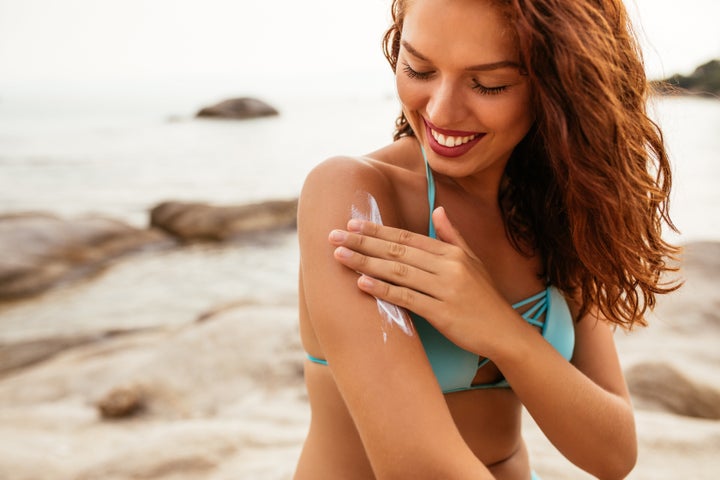Even if you’re using a high SPF, you could be leaving your skin vulnerable to sun damage because you’re applying sun cream too thinly, research suggests.
A study by King’s College London found when applied in the typical way, SPF 50 suncream provides just 40% of the protection we expect it to because we’re simply not using enough of it.
The researchers said an average-sized woman sunbathing in a bikini in a hot climate should use around 100ml of sun cream per day, meaning you will need more than one bottle of sun cream per person for a week-long holiday.

Previous studies suggest sun cream is typically spread as thinly as 0.8mg/per cm2, but manufacturers base SPF ratings on application of 2mg/cm2.
In order to stay protected, the researchers suggested holidaymakers use 3ml (around half a teaspoon) of sun cream on each arm, the face and the neck, plus 6ml (a full teaspoon) to each leg, the front and the back of the body. You should then reapply at least three times per day.
Lead researcher Professor Antony Young, from King’s College London, said: “There is no dispute that sunscreen provides important protection against the cancer-causing impact of the sun’s ultraviolet rays. However, what this research shows is that the way sunscreen is applied plays an important role in determining how effective it is.
“Given that most people don’t use sunscreens as tested by manufacturers, it’s better for people to use a much higher SPF than they think is necessary.”
The research involved exposing eight fair-skinned volunteers to a blast of UV radiation, simulating sunlight. Target areas of their skin were treated with high SPF sunscreen of varying thickness, ranging from 0.75mg/cm2 to 2mg/cm2.
Another group of eight received exposures on five consecutive days, to mimic a holiday experience. Biopsy tissue samples showed that repeated UV exposure caused “considerable” DNA damage to unprotected skin areas, even when the radiation dose was very low. Damage was progressively reduced as the thickness of applied sunscreen increased.
Nina Goad, from the British Association of Dermatologists, said: “This research demonstrates why it’s so important to choose an SPF of 30 or more.
“In theory an SPF of 15 should be sufficient, but we know that in real-world situations we need the additional protection offered by a higher SPF. It also shows why we shouldn’t rely on sunscreen alone for sun protection, but we should also use clothing and shade.
“An extra consideration is that when we apply sunscreen, we are prone to missing patches of skin, as well as applying it too thinly.”
The findings are reported in the journal Acta Dermato-Venereologica.